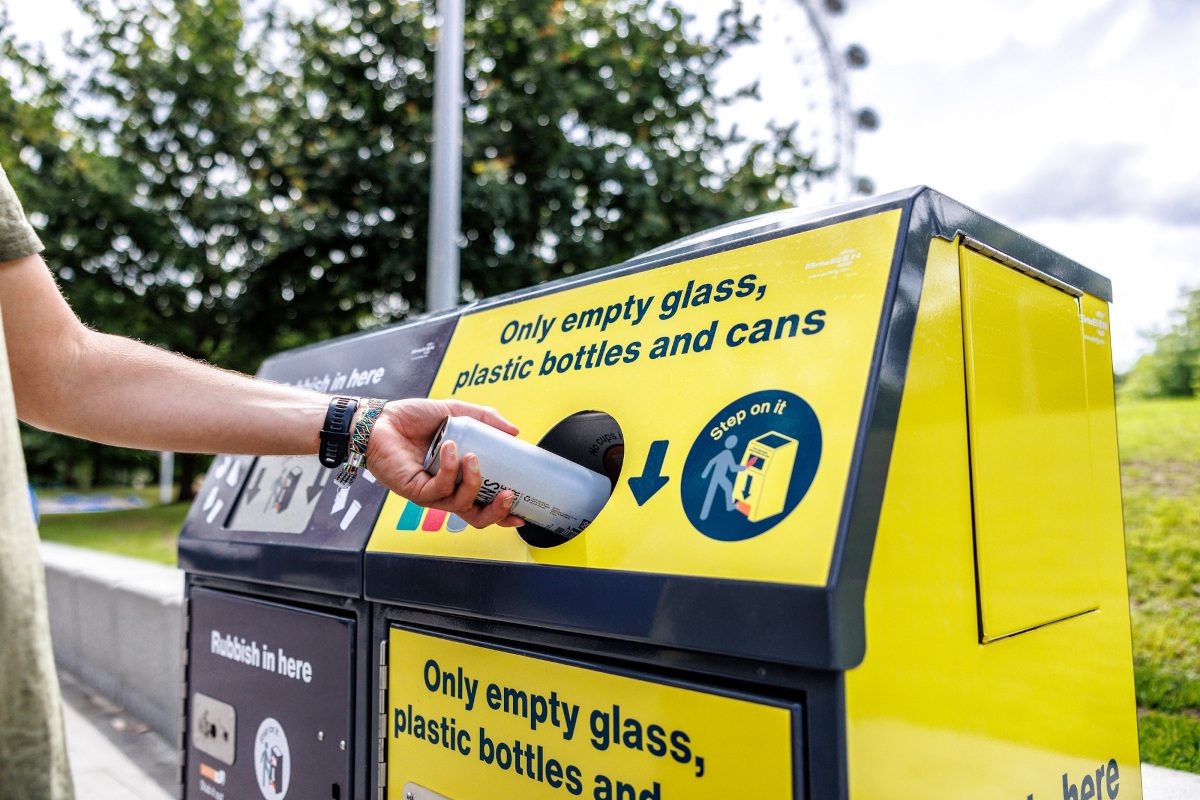
- TRASH AND RECYCLE BIN MAC OS X
- TRASH AND RECYCLE BIN UPDATE
- TRASH AND RECYCLE BIN SOFTWARE
- TRASH AND RECYCLE BIN FREE
- TRASH AND RECYCLE BIN WINDOWS
The International English "Wastebasket" had been dropped at the end of 2009, making the name "Trash" standard.
TRASH AND RECYCLE BIN MAC OS X
With the new interface of Mac OS X introduced in 2001, the Trash icon moved from the desktop to a permanent place at the end of the Dock. The icon shows a bin with a recycling symbol on its front. The current (revised) Recycle Bin allows for subdirectory trees to exist within folders that have been moved there. The directory structure can only be restored if the batch of files is "undeleted".
When a folder is deleted, its containing files are moved into the bin and mixed with other deleted files. In this version, the original location record of the file is stored, but the folder itself didn't allow subdirectories.
TRASH AND RECYCLE BIN FREE
Unlike the mac, at default settings Recycle Bin auto-deletion permanently deletes files to free up disk space when it gets low, or deletes files in the Bin over 30 days.
TRASH AND RECYCLE BIN WINDOWS
Microsoft introduced its current trash system in 1995, the Recycle Bin, with Windows 95, as an area to store and review files and folders prior to deletion. In 1993 or 1994, Microsoft implemented its first temporary deletion system in MS-DOS 6, under the name Delete Sentry: When a file was deleted, it was moved to a hidden SENTRY folder at the root of the drive.

TRASH AND RECYCLE BIN SOFTWARE
Non-Apple software could use other metaphors for file deletion, such as Recycle Bin, Smart Eraser, or Shredder. (filed in 1988, decision affirmed on appeal in 1994) was that graphical user interfaces similar to Apple's did not infringe rights, but some features including Apple's Trash icon were original and protected by copyright. The outcome of the lawsuit Apple Computer, Inc. Following the 1991 introduction of System 7, the Trash folder retains its contents until the user chooses to empty the trash. From 1987, if anything was in Trash its icon bulged as a reminder to check the contents before shutting down. In early versions of the Macintosh Finder, Trash contents were in volatile memory, and were lost when the computer restarted. In " International English" localizations of Classic Mac OS, Trash was named "Wastebasket".
TRASH AND RECYCLE BIN UPDATE
Even a trash can." A subsequent update to Lisa renamed its Wastebasket icon "Trash". This incorporated some elements of the Lisa interface, including a refined version of the icon, now labelled Trash, with "a closed lid with a handle on top." An ad supplement in Newsweek introduced the Mac interface, with its "pictures of objects you'll have no trouble recognizing. In 1983 Susan Kare designed the core visual design language of Classic Mac OS System 1, launched in January 1984. This lacked functionality and was not taken further. an open lid and a handle on the front of the can." Apple advertised "If you can find the trash can, you can run a computer." įollowing this, the Magic Desk I ROM cartridge for Commodore 64 presented a primitive representation of office furniture, with a wastebasket or trash bin under the desk. The release version of Lisa was launched in 1983 with a "Wastebasket", its icon "an alley-style garbage can vertical lines to indicate a ribbed surface. In March 1982 he reached the stage of changing to an icon-based file manager, and produced a mock-up with a trash can icon (including buzzing flies) for deleting files. A program that includes file manager functionality may or may not send files to the recycle bin, or it may allow the user to choose between these options.īill Atkinson began developing the Apple Lisa user interface in late 1978.

Low-level utilities usually bypass this layer entirely and delete files immediately. Whether or not files deleted by a program go to the recycle bin depends on its level of integration with a particular desktop environment and its function.

On certain operating systems, files must be moved out of the trash before they can be accessed again. Within a trash folder, a record may be kept of each file and/or directory's original location, depending on the implementation. In macOS, the Trash folder links to hidden folders on each mounted drive where the files are actually stored. It may still be possible using third party software to undelete those that were deleted by mistake. In the Finder or file manager, the Trash or Recycle Bin can be viewed by the user as a special Folder (file directory), allowing the user to browse the files and retain those still wanted before deleting the others permanently (either one by one, or via an 'empty trash' command). The concept and name is part of Macintosh operating systems, a similar implementation is called the Recycle Bin in Microsoft Windows, other operating systems use other names. In computing, the trash is a graphical user interface desktop metaphor for temporary storage for files set aside by the user for deletion, but not yet permanently erased. Example of a trash can or recycling bin "containing files" icon, here designed by the Tango Desktop Project.


 0 kommentar(er)
0 kommentar(er)
